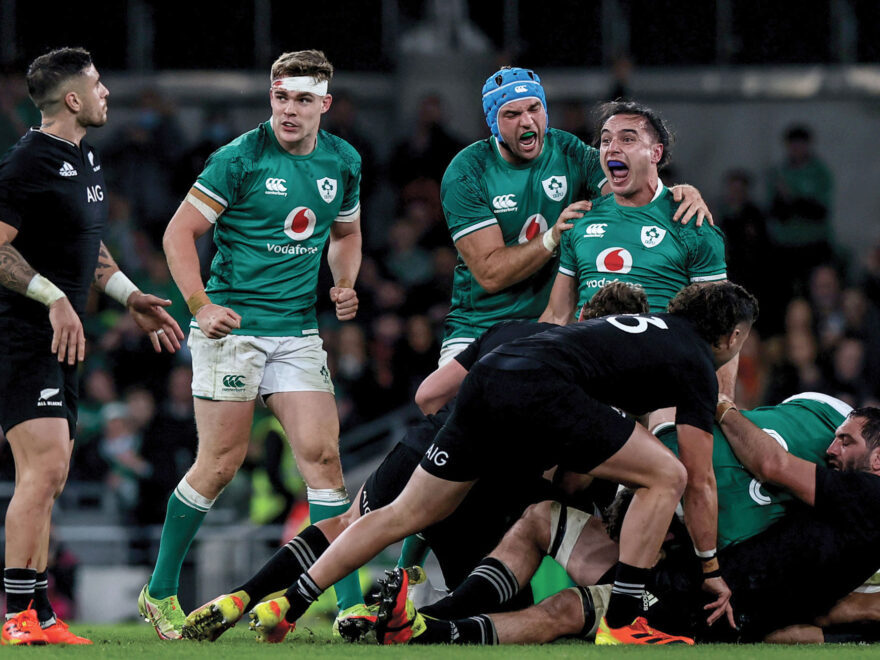Former Manu Samoa No 10 and freelance rugby scribe Campbell Burnes contends that Ireland has never historically been easy beats, hence why the All Blacks will be on high alert come July.
We know all about the All Blacks’ rivalries with the Springboks, the Wallabies, France and England.
They are all worthy foes, to be sure. But what of our rugby opponents from the Emerald Isle? We do not face them as much as we do the Poms, or Les Bleus, or even the Lions.
Yet Ireland has historically been tough to subdue, even when you think back to the first encounter in 1905, when a Bob Deans double helped the All Blacks to a 15-0 victory at Lansdowne Road in Dublin, the iconic ground which is now the Aviva Stadium.
If you had soaked up some of the pre-match comment prior to last November’s Test, in which the All Blacks famously came a cropper, you would have thought this rivalry only kicked off in earnest in 2016 at Chicago’s Soldier Field, when Joe Schmidt’s troops engineered an historic win for the ages.
Not so. Granted, it did take until 1978 until any Irish team lowered the All Blacks, 12-0. The men in black were lucky to get nil that day at Limerick’s Thomond Park, when Munster tackled their hearts out and won everlasting renown.
The All Blacks would, however, always win when facing Ireland’s national team. However, it was never a blowout until 1992. It was a close-run thing in 1924 (6-0), 1963 (6-5) and the 10-all draw of 1973. It needed a late Andy Dalton try to seal the 10-6 win in 1978 to kick off the Grand Slam dream.
Remarkably, it would be another 11 years until they met again when John Gallagher’s dazzling footwork helped seal the deal in a 1989 clash most notable for Willie Anderson’s passionate challenge of the haka.
In 1992, a Frank Bunce double helped avoid a monumental upset at Carisbrook. Since that day, the All Blacks, who embraced professionalism rather more adeptly than Ireland, have run up 11 decisive victories, the last of which came in the 2019 Rugby World Cup quarter-final.
But the close calls have kept coming, Carisbrook in 2002, Christchurch in 2012 (a Dan Carter pot saving blushes that night), and the late Aaron Cruden conversion in 2013. Ireland started to believe. That belief filtered through to the rest of its rugby, the Ireland women and Under 20s taking down their opponents in black in 2016 and 2017.
Regular contact with the All Blacks has clearly benefitted the Irish. July’s series will be their sixth visit to these shores since 2002, plus of course the 2011 Rugby World Cup. Schmidt did wonders for expanding their game and their mindset. Now Andy Farrell has shown his wares, helped by the Kiwi-born trio of wing James Lowe, second five Bundee Aki (pictured) and halfback Jamison Gibson-Park.

Ireland is now even harder to subdue, with more attacking threats, and a well organised rush defence. It offers more breadth than just plucky tackling and a pinpoint high ball.
It remains a mystery how Ireland has never reached a RWC semifinal. For now, All Blacks fans will be on high alert, having watched the Six Nations closely. If the fatigue levels are manageable a year after a Lions odyssey, the Irish will give the men in black a stern challenge and will fancy their chances of pinching at least one Test.
That would be another historic moment.

